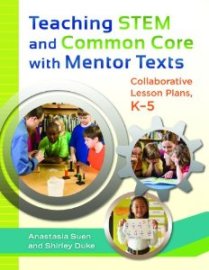Photographs by Annie Crawley. 48 p. Millbrook Press/ Lerner, April 1, 2014. 9781467712835.
Three grad students spent three weeks on board the ship, New Horizon, participating in the Scripps Environmental Accumulation of Plastic Expedition (SEAPLEX) in 2009. They were part of a crew who motored out to a huge area in the Pacific Ocean know as the Great Pacific Garbage Patch or the North Pacific Central Gyre, formed by four oceans and the winds and currents which direct plastic and other bits of pollution to the area and don’t allow it to escape.
The scientists had many questions that they wanted answered and used the scientific method to start to find answers. The book focuses on three young women who were graduate students and the specific experiments they were performing. Chapters also include information about the rest of the crew and what life is like on board. For instance, it took a week to even get to the gyre. What did the scientists do? The reader learns that organized and tested equipment, dealt with seasickness, bunked with a roommate in rooms so small that “only one could stand on the floor at a time,” and worked out on exercise equipment on deck. (8)
Once they hit the gyre, they were hard at work collecting samples on the surface and below. The crew collected plastic in “130 of their 132 net tows over 1,700 miles of open ocean.” (36) While plastic doesn’t biodegrade, it does break down into smaller and smaller pieces. Pieces that are ingested by sea life. Pieces that contain poisons. The scientists hope to discover how this affects the animals.
The book is attractively designed. Pages have an hombre background of sea green. They are filled with plenty of crisp, full-color photographs, maps and interesting text boxes and sidebars. A final chapter includes information about what the reader can do to help reduce this problem.
The back-matter includes links to some videos of the SEAPLEX team in action, other websites as well as books for further reading. Source notes, a glossary and index round out the volume.
I’ve mentioned before on this blog that I love these types of science-in-real-life books. This one belongs right up there with my best-beloved titles. I heap some additional love on it because the scientists are young and female, hopefully encouraging more young women to consider studying science. The text and photographs work together so effectively to hammer home the seriousness of this problem and encourage the reader to rethink habits.
This book will fit in beautifully in several curriculum areas at my school, especially in seventh grade science. Surely a must-purchase item for school and public libraries.















